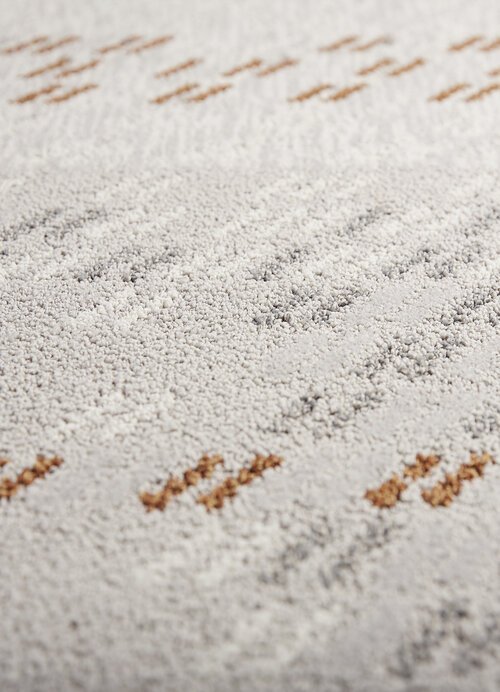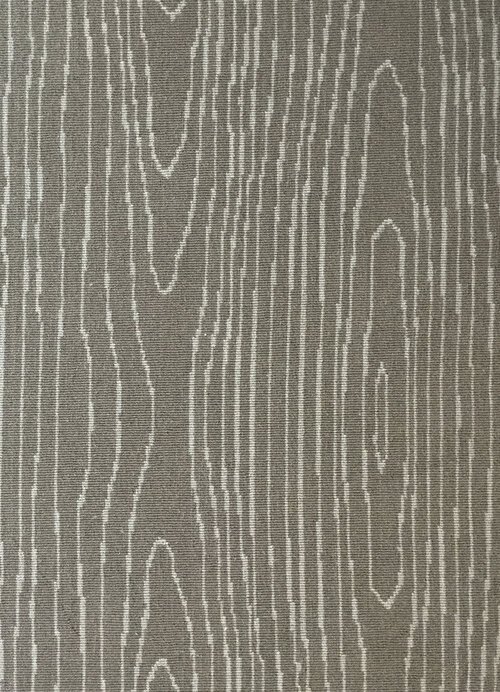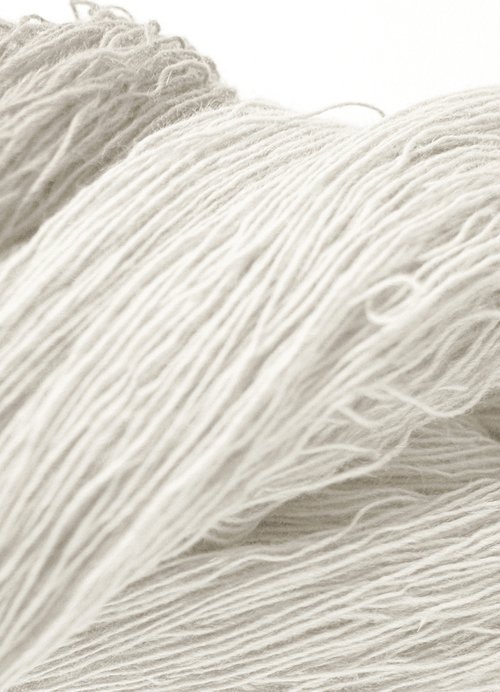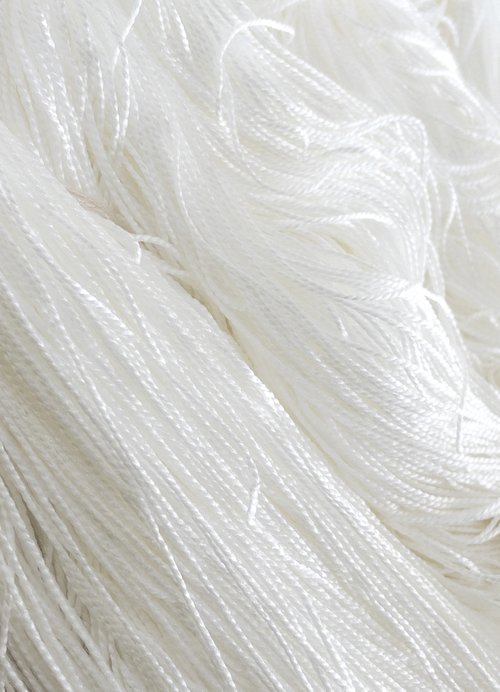
Production methods
Creative Matters is recognized worldwide as a creator of original custom floor coverings. Our products are manufactured using various techniques according to the unique requirements of each project. We offer the following construction methods for floor and wall coverings, and we are always investigating and discovering new methods and materials which will match your aesthetic, budget and requirements.
For information on each construction method and its environmental impact, click here.
Construction styles
-
A luxurious quality, handknotted means literally every knot has been created by hand. Creative Matters employs only adult artisans in Nepal, India and Afghanistan where this centuries-old skill has been handed down through generations. Most of our handknotted rugs are made with handspun Tibetan wool and the finest Chinese silk. By varying pile heights, textures and knot counts, we create many beautiful effects. (video: handknotting from Nepal)
As a licensed Label STEP partner, Creative Matters is fair trade certified which means we are committed to fair trade throughout our handmade carpet supply chain. Our handknotted rugs and carpets are produced by adult artisans earning a living wage under safe working conditions and using the best ecological practices possible. Learn more about Label STEP.
-
Handcrafted by either a mechanized or manually operated hand tool which punches wool into canvas, our handtufted carpets and rugs are beautiful and durable for both residential and commercial applications. Creative Matters uses mills in Canada, Thailand, India and China that have perfected the technique to the highest standards. We recommend New Zealand wool for handtufting but additional sheen can be achieved with the addition of silk or small accents of prism nylon. (video: handtufting from Thailand)
Handtufted carpeting from Thailand follows the 5S working principles
100% wool and 80% wool, 20% nylon handtufted carpet from Thailand has passed the VOC Emission test report – Indoor Air Comfort GOLD certification.
-
Flatwoven rugs are the oldest style of weaving, and are created by interlacing warp and weft threads. Made by hand in Nepal, India, Afghanistan and China, we offer dhurrie, kilim, blanket weave, soumak, aubusson and super fine tapestry techniques. We work with a number of mills to develop new combinations of techniques that can be made in a variety of yarn types – wool, silk, cotton, jute, or polyethylene terephthalate (PET).. (video: aubusson from China)
-
As the name suggests, handloomed rugs are made by hand on a traditional weaving loom that is powered by hand and foot. Think of it as a part person and part machine technique. It has a double warp construction where the hidden cotton base and wool (in some cases silk) pile are woven simultaneously in a similar way the traditional velvet weaving is done. A team of weavers (usually two to three depending on the width of the rug) uses a long steel rod to shoot fibres over and under the weft threads creating the pile. Different rod sizes allow different pile heights. Pile can alternate by row; it can allow one row to be cut and the next to be loop or have different height from row to row. Just like on the fabric loom the number of shafts will allow for more intricate patterning. Creative Matters handloomed rugs are typically made in India.
-
This machine-made construction method is suitable for both residential and larger commercial areas. On Axminster looms, the pile and backing materials are woven together in a single operation making them especially suitable for heavy traffic areas. We work with highly skilled mills in China and Poland. Woven Axminster allows for very large repeat patterns. Generally the specification is 80% wool 20% nylon with many different face weights. We also offer the option of 100% wool with a biodegradable jute backing. Axminster is always cut pile. CRI - Green Label Plus® - for woven Axminster
ISO14001 - Environmental Management System (EMS) for woven Axminster
ISO9001 - Quality Management System (QMS) for woven Axminster
80% wool, 20% nylon woven Axminster from China has passed the French VOC Regulation, and the French CMR components.
-
A newly developed technique, we are able to create a combination of handtufted and woven Axminster which offers textural possibilities to the cut pile woven Axminster broadloom. The handtufted portion can be wool or silk in cut or loop pile.
-
Creative Matters presents an all-natural and all-compostable EcoAx, a triumph that combines the efficiency and durability of woven Axminster with the promise of a greener tomorrow.
Woven Axminster has traditionally excelled as wall-to-wall carpeting for large areas in a blend of 80% wool and 20% nylon. The incorporation of nylon means the carpet is not fully biodegradable. EcoAx, however, is made with 100% wool which is fully compostable. Wool is a renewable fibre, a sustainability winner. Our EcoAx colour palette comprises eight natural, undyed shades of wool distinctive to various breeds of sheep. Clients can also choose to use an accent of dyed wool or opt for an all-dyed wool custom carpet.
As with traditional Axminster carpets, EcoAx is made on machines where each tuft of yarn is woven and locked into place by shots of backing yarn to create a strong, integrated three-dimensional structure. For equally robust EcoAx, the wool yarn is held in place by warp threads of viscose and weft threads of jute. (Viscose is made from tree wood pulp and is biodegradable.)
Creative Matters’ EcoAx is European made. To learn more about EcoAx, read our brochure.
-
With the dye-injected method of carpet production we can create carpet of any size to fit any space: ballrooms, casinos, exhibition halls, corridors, staircases or area rugs for hospitality and commercial interiors. To produce the carpet, the chosen colours are applied to a carpet base using a sophisticated dye injection method. The carpet base can be made of wool or nylon. Both cut pile and loop pile are options. There are options available for direct glue down installations or with attached pad for comfort underfoot.
Dye-injected broadloom sources go above and beyond federal standards by having such certifications as the following (many more certifications available upon request):
ISO9001 - Quality management
ISO14001 - Environmental Management System (EMS) Standard
LEED - Leadership in Energy and Environmental Design
IMO - International Maritime Organisation
CRI - Green Label Plus (Registered)
-
Computer Yarn Placement (CYP) is a luxurious technique suited for large production and hotel use. With a limited palette of up to six colours, we can achieve many effects with cut and loop pile while mixing colours together to achieve different tones. We use mills in the U.S. for this carpet technique.
Cradle to Cradle Certified™ Products Program
-
Similar to the woven Axminster technique, Wilton is machine-made and hard wearing and therefore suitable for heavy traffic areas. It is prized for its luxurious loop and/or cut pile construction and magnificent durability.
Wallcoverings
-
We offer standard substrates for both commercial and residential applications, including an easy-to-install peel and stick, along with Bling, a studded shimmering finish. Eco-friendly aqueous-based paints provide high-colour resolution, resulting in a product that is durable and washable. Digitally printed in the U.S.
Vinyl wallcovering manufactured using eco-solvent dyes.
Non-PVC options meet stringent design and performance standards.
-
To create needle felted wallcoverings, polyester fibres go to a felting factory where they are first transformed into felt. Then the textile is treated with barbed needles that permanently interlock the fibers to create a soft blending of colours. Gentle gradations and painterly designs are beautifully captured in this process. These special wallcoverings add texture, warmth and sound absorption to walls in all settings. Needle felted products from China, Canada/USA are available.
Needle felted wallcoverings from China have passed Azocolourants Content Test (Health Hazards Test - Detects the Amines derived from Azocolourants and Azodyes)
Content
-
We use silk in area rugs for a variety of different reasons. When a particularly luxe rug is called for and the space has moderate foot traffic, we will use 100% silk. Our handknotted collection rugs are usually made in 80% wool and 20% silk – the silk content not only gives sumptuous texture, it enables us to create beautiful design details. Wherever the rug is made, we always use Chinese silk as we consider it the best.
-
Interior professionals can be confident that wool is not only the perfect canvas for the rug designer and presents all the advantages of comfort, durability, stain resistance, flame resistance and noise absorption, but it is also one of the world's most natural, sustainable and renewable products.
-
As its name suggests, shiny nylon is shinier (it can also be softer) than the regular nylon yarn used in floor coverings. We use it to add lustre to our designs when silk is not a practical option.
Contact us for samples or additional information on other production methods.















